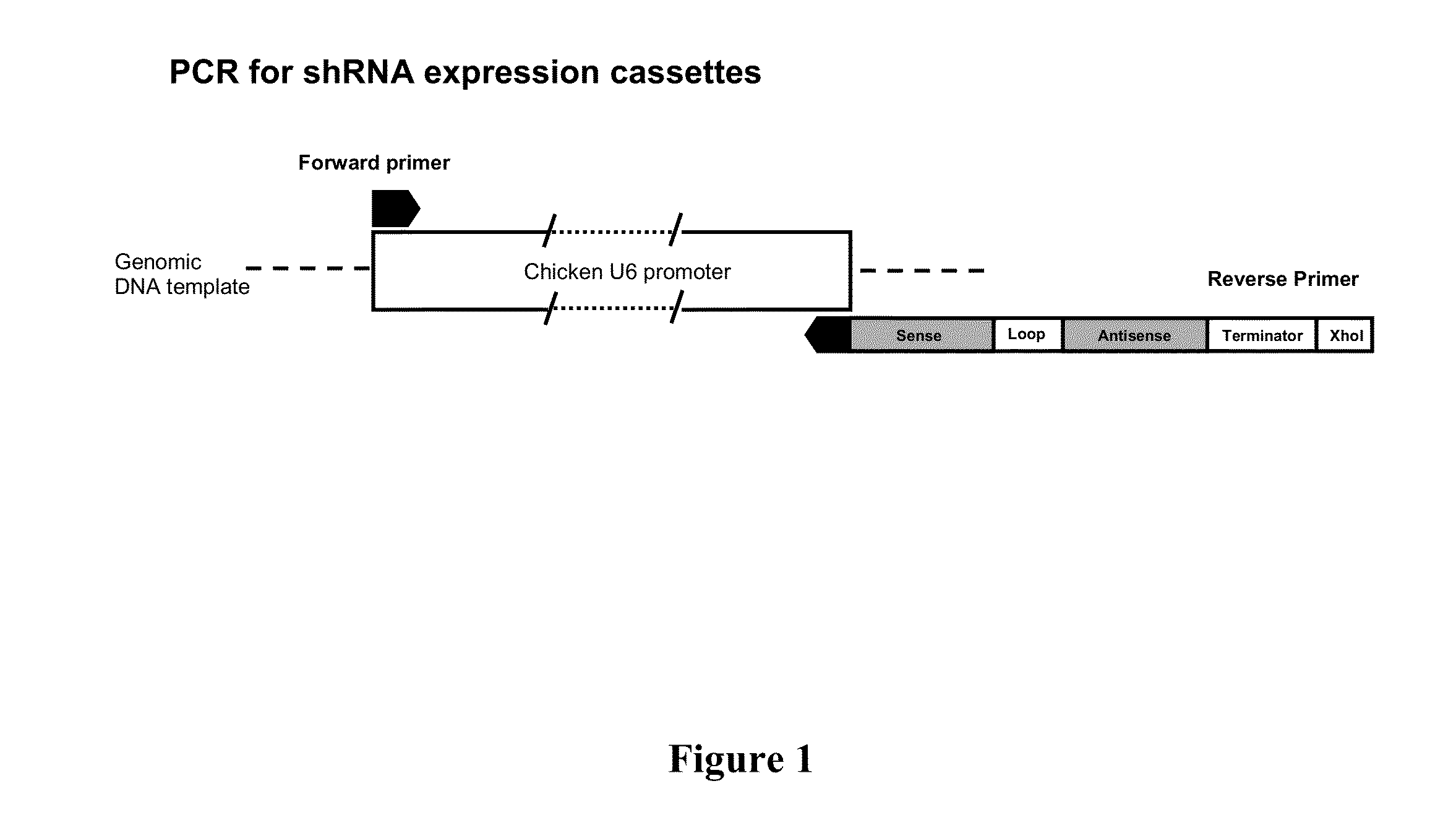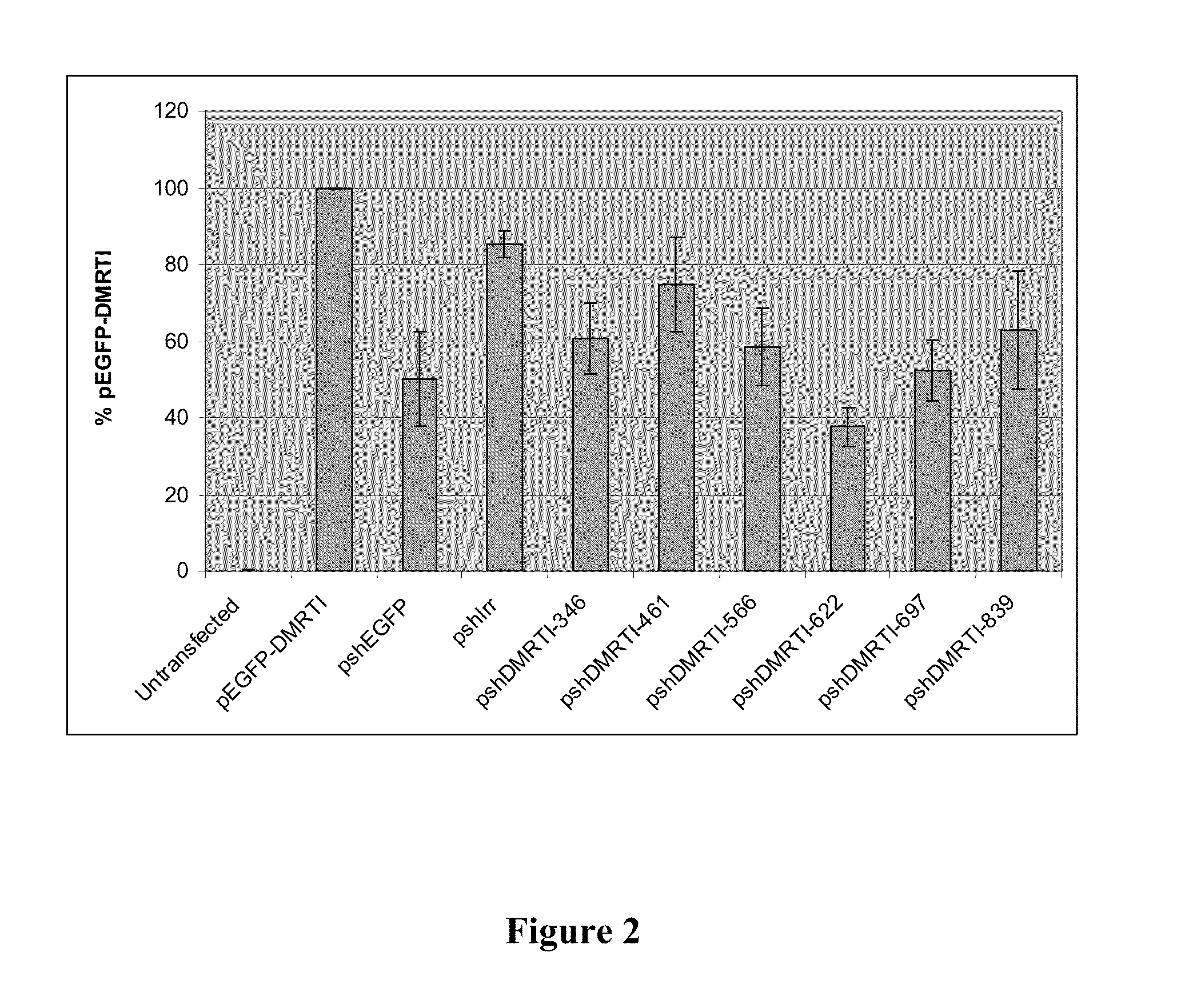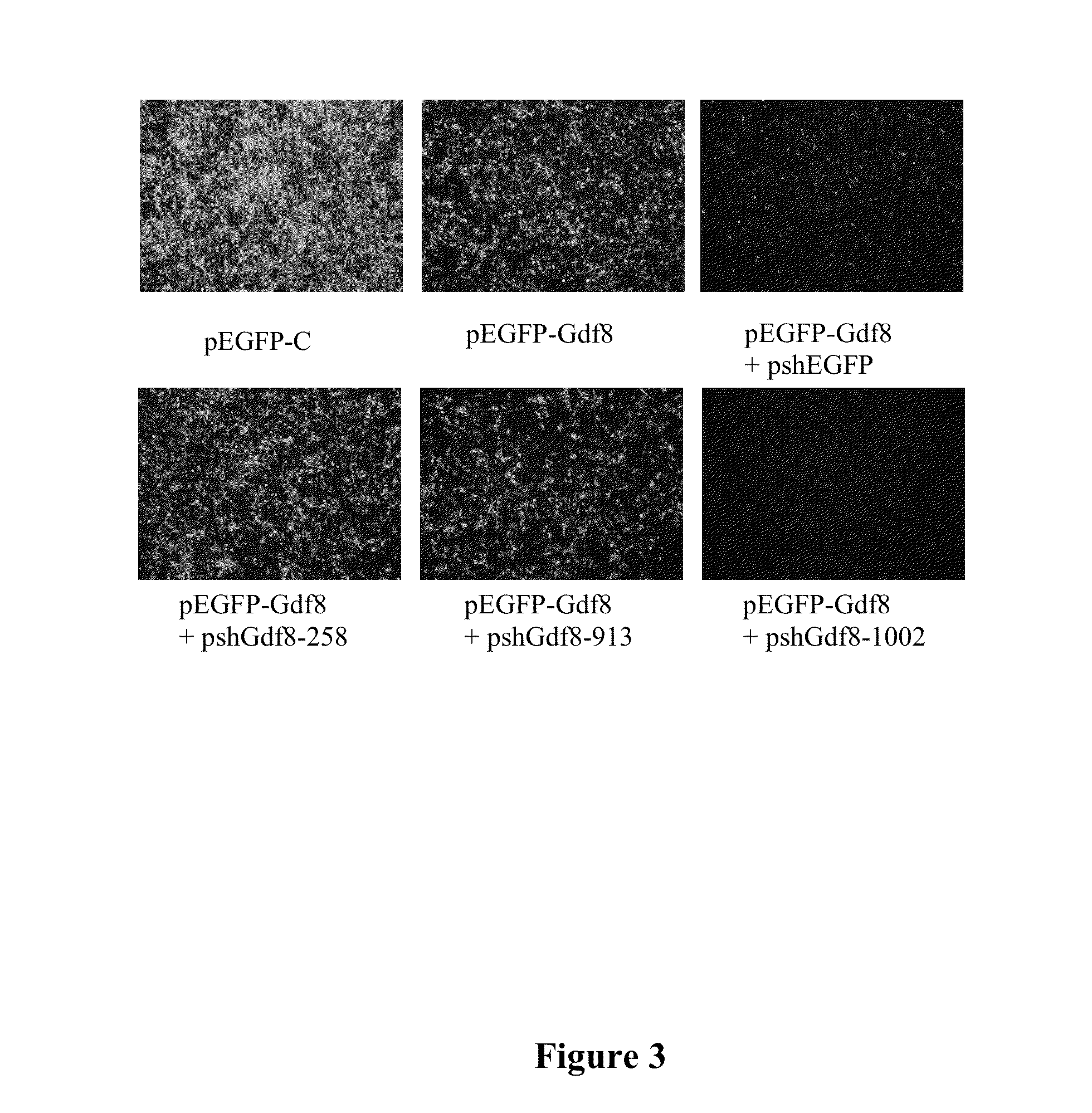Modulating production traits in avians
a technology of production traits and avians, applied in the field of modulating traits, can solve the problems of not being practical economically, using probes (u.s. patent no. 5,508,165), and affecting and achieve the effect of modifying the phenotype of the developing embryo
- Summary
- Abstract
- Description
- Claims
- Application Information
AI Technical Summary
Benefits of technology
Problems solved by technology
Method used
Image
Examples
example 1
Identification of shRNA Molecules for Down-Regulating DMRT1 Protein Production in Chickens
Selection of shRNA Sequences Targeting DMRT1
[0102]The present inventors selected 30 predicted siRNA sequences for Dmrt1 using the Ambion designed siRNA target finder (www.ambion.com / techlib / misc / siRNA_finder.html). The 30 siRNA sequences were then screened for selection of shRNAs (Table 1). There are several algorithms available to select potential siRNA sequences for specific target genes. It has been shown, however that many of these predicted siRNAs do not function effectively when processed from expressed shRNAs. Taxman et al. (2006) have specifically designed an algorithm to predict effective shRNA molecules and the inventors made their own modification to the algorithm to improve shRNA prediction. The inventors applied the modified Taxman algorithm to the 30 selected siRNAs so as to choose sequences for testing as shRNAs for the specific knockdown of Dmrt1 gene expression.
[0103]There are ...
example 2
Identification of shRNA Molecules for Down-Regulating Myostatin Protein Production in Chickens
Selection of shRNA Sequences Targeting Myostatin (Gdf8)
[0109]79 predicted siRNA sequences for Gdf8 were identified using the Ambion designed siRNA target finder (www.ambion.com / techlib / misc / siRNA_finder.html) (Table 4). Additional siRNA sequences optimized using the Taxman algorithm are provided in Table 5. The inventors selected 3 of these sequences (Gdf8-258, Gdf8-913 and Gdf8-1002) for the construction of ddRNAi plasmids for expression of shRNAs (shown in bold in Table 4).
Construction of ddRNAi Plasmids for Expression of Selected shRNAs
[0110]The chicken polymerase III promoter cU6-1 (GenBank accession number DQ531567) was used as template to construct ddRNAi expression plasmids for the selected Gdf8 and cEGFP shRNAs, via a one-step PCR (FIG. 1). PCR for the construction of the shRNA plasmids used primer TD135 paired with DS304 (for shGdf8-253), DS305 (shGdf8-913), DS306 (shGdf8-1002) or ...
PUM
| Property | Measurement | Unit |
|---|---|---|
| volume | aaaaa | aaaaa |
| volume | aaaaa | aaaaa |
| mass | aaaaa | aaaaa |
Abstract
Description
Claims
Application Information
 Login to View More
Login to View More - R&D
- Intellectual Property
- Life Sciences
- Materials
- Tech Scout
- Unparalleled Data Quality
- Higher Quality Content
- 60% Fewer Hallucinations
Browse by: Latest US Patents, China's latest patents, Technical Efficacy Thesaurus, Application Domain, Technology Topic, Popular Technical Reports.
© 2025 PatSnap. All rights reserved.Legal|Privacy policy|Modern Slavery Act Transparency Statement|Sitemap|About US| Contact US: help@patsnap.com



